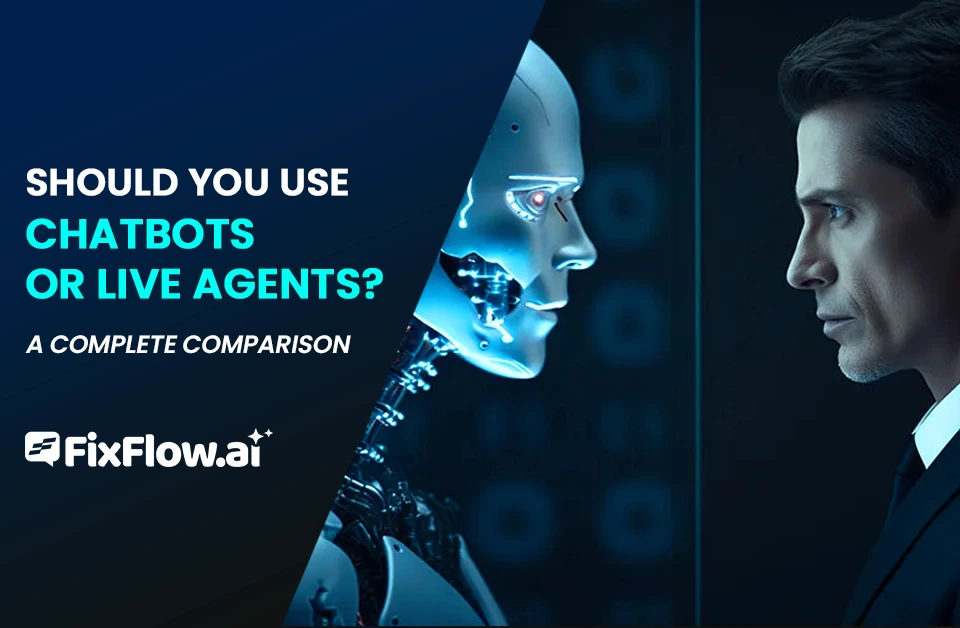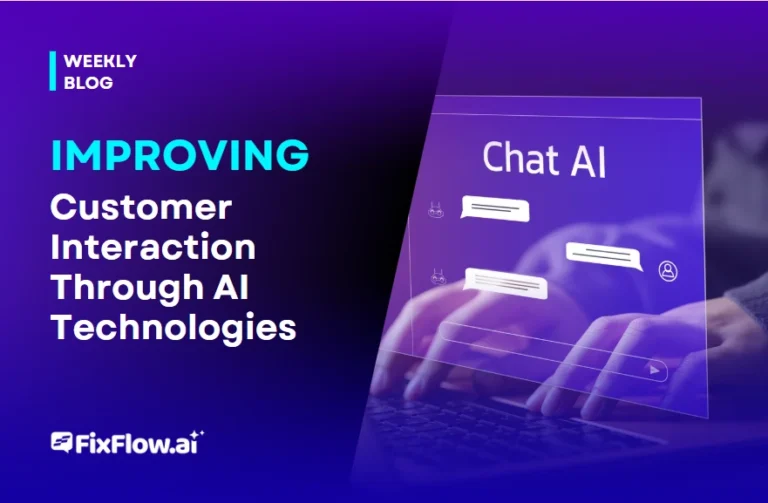Should You Use Chatbots or Live Agents? A Complete Comparison
When deciding between chatbots and live agents, it’s all about finding the right balance for your business needs. Chatbots offer quick, automated responses and can efficiently handle high volumes of simple inquiries at a lower cost. They’re perfect for providing instant support 24/7. On the other hand, live agents shine in complex interactions, offering empathy and personalized service that can strengthen customer relationships. While chatbots are cost-effective, live agents involve more financial investment but add a human touch that’s hard to replicate. Striking a balance between the two might provide the best customer service solution for your unique requirements.
Understanding Chatbots
In today’s digital age, chatbots have become essential tools for businesses looking to automate customer interactions efficiently. When it comes to understanding chatbots, it’s important to differentiate between rule-based and AI-powered chatbots. Rule-based chatbots operate on predefined scripts and can handle straightforward queries by guiding users through a set of options. They’re great for providing quick, consistent answers to common questions but can struggle when faced with complex issues.
On the other hand, AI-powered chatbots use advanced algorithms and machine learning to understand and process natural language, making them more adaptable and capable of handling customer interactions with a higher degree of sophistication. These AI-driven solutions can learn from previous interactions, continuously improving their responses to better mimic human-like conversations.
As you consider implementing chatbots into your customer service strategy, it’s essential to evaluate how they handle customer interactions. AI-driven chatbots offer a more dynamic experience but require significant initial setup and ongoing training. Rule-based chatbots, though simpler, are easier to maintain. Balancing these options will help you decide which type of chatbot aligns best with your business goals and customer service needs.
Exploring Live Agents
While chatbots excel in handling straightforward inquiries, live agents bring a level of empathy and understanding that’s irreplaceable in complex customer interactions. With live chat agent training and skills, these human representatives are equipped to decipher the nuances of customer emotions and contexts, offering a personalized touch that machines simply can’t replicate. When your customers face intricate problems, live agents are adept at handling complex queries in support, guiding them through multifaceted issues with patience and clarity.
One of the standout benefits of engaging live agents is their ability to foster personalized customer interactions. When a customer has a problem that isn’t a simple yes or no, a live agent can adapt their approach to suit the individual needs of the customer. This degree of personalization is essential for building strong, lasting relationships with your clientele.
Moreover, live agents are trained to handle sensitive situations with care, something that chatbots often struggle with. Their skills in active listening and empathy allow them to manage customer frustrations and turn potentially negative experiences into positive outcomes. By leveraging live agents, you make certain that your customers feel heard, valued, and understood.
Cost Considerations
When weighing the costs of chatbots versus live agents, it’s important to take into account both immediate expenses and long-term scalability. Chatbots typically offer a lower initial investment compared to hiring and training live agents. Whether rule-based or AI-driven, chatbots can manage high volumes of inquiries without the added cost of salaries, benefits, or training. However, don’t overlook the cost of developing, deploying, and maintaining these bots, especially if you want high AI chatbot accuracy rates.
In contrast, live agents require significant financial outlay, including recruitment, salary, and ongoing training. This can be particularly challenging for smaller businesses or those looking to scale quickly. Yet, live agents bring the advantage of handling complex and emotional queries, which can be invaluable for customer satisfaction.
For many businesses, a hybrid customer support model offers the best of both worlds. By combining chatbots to handle straightforward inquiries with live agents for more nuanced issues, you can optimize costs while maintaining quality service. This approach allows you to benefit from chatbots’ cost-effectiveness while ensuring that complex customer needs are met by skilled human agents, creating a balanced and efficient support system.
Efficiency and Response Times
Despite their limitations, chatbots excel in efficiency and response times, delivering instant answers to your inquiries without the wait. When comparing chatbot response time to that of human agents, chatbots have a clear edge in speed. They’re designed to handle multiple queries simultaneously, providing real-time customer interactions. This is particularly advantageous during peak business hours when volumes are high. You don’t have to worry about being put on hold or waiting for an agent to become available.
In an era where immediate solutions are highly valued, automated support guarantees your questions are addressed promptly. Chatbots are always on, meaning they can offer assistance 24/7, unlike human agents, who might be limited by business hours or time zones. This accessibility can greatly enhance operational efficiency, particularly for businesses with a global customer base.
However, while chatbots are quick, they might not always understand complex or nuanced inquiries like a human would. Human agents excel in providing personalized support and handling intricate issues. Although their response times can vary based on availability, the depth of understanding they offer can be invaluable for resolving complicated problems. Balancing automated vs. human support can be crucial to optimizing your customer service strategy.
Customer Experience
An exceptional customer experience hinges on how effectively chatbots and live agents address your needs and preferences. When you interact with a chatbot, the customer experience with AI can be swift and efficient, especially for straightforward queries. AI-driven chatbots provide quick, consistent answers, enhancing customer satisfaction with automation. They’re available around the clock, ensuring your questions are addressed promptly, which is a notable advantage for tech-savvy customers who value speed and efficiency.
However, there’s no substitute for the human touch in customer service when it comes to more complex or emotionally charged issues. Live agents excel in understanding emotions and context, offering empathy and personalized solutions that a chatbot might struggle to deliver. This human interaction can build stronger relationships and leave you feeling valued and understood.
Ultimately, the choice between chatbots and live agents should consider the nature of your inquiries and your personal preferences. If you seek immediate, straightforward answers, automated solutions may suffice. However, for issues that require a deeper connection or nuanced understanding, live agents provide the human touch that can greatly enhance your overall customer experience. Balancing both can offer the best of both worlds.
Frequently Asked Questions
Can Chatbots Integrate With Existing CRM Systems?
Absolutely, chatbots can integrate with your existing CRM systems. They can pull customer data to personalize interactions and update records in real time. This integration boosts efficiency by automating routine tasks and ensuring agents have all the information they need for complex queries. Plus, it helps maintain a seamless customer experience across channels. So, if you’re looking to enhance your customer service, integrating chatbots with your CRM is a smart move.
What Industries Benefit Most From a Hybrid Support Model?
Which industries benefit most from a hybrid support model? Sectors like e-commerce, travel, and telecommunications can gain a lot from it. These industries deal with high volumes of queries and need fast responses, but they also face complex issues that require human empathy. A hybrid model lets you use chatbots for quick, repetitive tasks while live agents tackle more nuanced customer interactions, offering the best of both worlds.
How Do Chatbots Handle Data Privacy Concerns?
Data privacy concerns are essential when using chatbots. Chatbots should be designed with strong encryption protocols to protect sensitive information. They should also be compliant with data protection regulations like GDPR or CCPA. Chatbots should guarantee that they only collect necessary data and provide users with clear privacy policies. Finally, they should always review how data is stored and processed to maintain trust and ensure users feel secure with their interactions.
What Training Is Required for Live Agents to Work With AI Tools?
When training live agents to use AI tools, you need to focus on a few key areas. First, ensure they understand how AI integrates with their workflows. Then, they should get hands-on practice with the software, learning how to interpret AI-generated data and insights. It’s also important that they develop problem-solving skills to handle AI escalations. Continuous learning and adaptation to updates will keep them effective and efficient.
How Do Businesses Measure the Success of Their Customer Support Model?
To measure the success of your customer support model, focus on key performance indicators like customer satisfaction scores, response times, and resolution rates. Don’t overlook customer feedback and reviews, as they provide real insights into your service quality. Monitor cost efficiency and scalability to ensure your support aligns with business growth. Use analytics to track trends and adjust your strategy accordingly, ensuring you’re meeting both customer needs and business goals.







